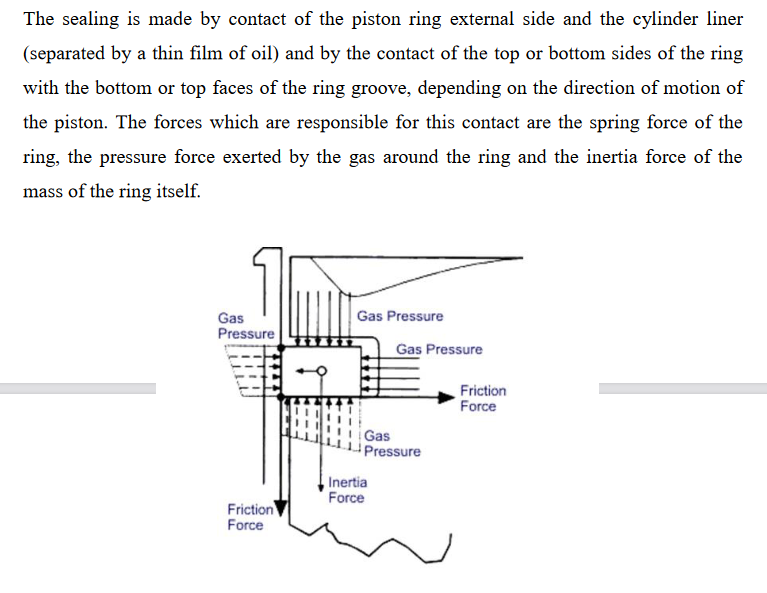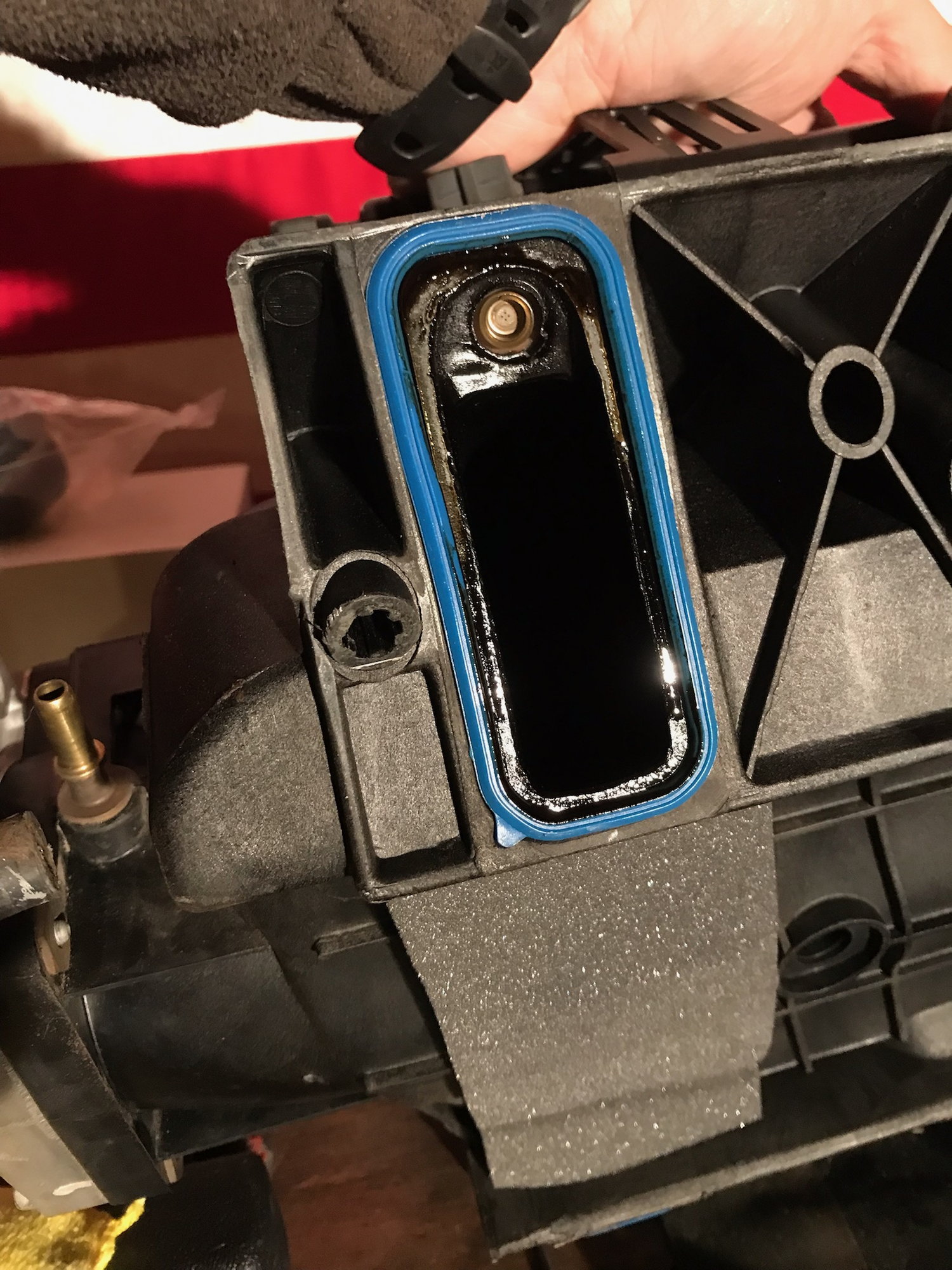Dry sump
C3 Tech/Performance - Dry sump crankcase venting - I?ve got a few hours in research on how to plumb my drysump system, but there are many different approaches from different manufacturers, cars and engines. I have an idea of what I want now, and want to confirm that this is correct. i have an...
www.corvetteforum.com
Help - is this normal? I have a Duratec installed in my escort running the SBD supplied Titan dry sump pump. I have read that these should be run with a sealed engine so have capped all the engine breathers. The tank is mounted in the engine bay and is vented to atmosphere. When I run the...
www.turbosport.co.uk
If the system cannot pull vac in the crankcase, then that is inadequacies with the scavenge pump system in use. Not any filter valves used, or boost, or rings, or anything like that.
The pump is either capable or it is not...design it right from the outset.
Some dry sump incorporate vacuum pumps as well in pursuit of total oil control.
I have a custom intake plenum, is it as simple as welding a port to it then, oem pcv valve to hose barb on intake manifold ? and passenger side valve cover to one of my twins’ intake tubes ?
From what you’re saying it should be fine with oem hose size as well ? I don’t mind adding that to my setup but all I’m trying to do is lessen oil buildup in the intercooler piping, plenum, etc
Twins, you have OEM twins? The OEM pcv system is already connected to the twins intake tubes. I am not sure exactly what you mean, did you change turbos and ditch the OEM intake tube? Or replace the intake tubes with custom fab work? In any case, yes simply copy the OEM pcv route valve cover -> Pre-compressor intake tube, post air filter.
Lets discuss the PCV valve side now:
Intake plenum -> Supra TT Pcv valve -> Valve cover (crankcase)
This is the idle/cruise side of PCV. This is the lowest flow side, the weak flow side, the high vacuum side, the minimum blow-by condition is idle/cruise.
Therefore no oil should ever be able to make it to this side. The intake should always remain free from oil due to pcv valve -> plenum because its the calm condition flow side, the idle/cruise is very little blow by , very little influence on crankcase pressure.
In other words, typical OEM valve cover baffle prevents oil from getting to the pcv valve, prevent oil ingestion. We see all engines whether turbo or not incorporate some kind of oil baffle system tied to their pcv valves.
So , how does oil still get through sometimes?
High crankcase pressure during WOT forces oil into the baffle:
In the early 2000's I tuned a bunch of 3L and 2.6L Supra/Skyline engines 600-800rwhp that all used catch cans extensively and atmospheric venting, it works well for about 15,000 to 25,000 miles or so, and then the engines begin to noticeably smoke at idle, their intake coating with oil despite the catch cans, the oil leaking develops at the front and rear main seals, the combustion chamber carbon coating seems excessive and piston rings accumulate sticky oil crust, burning remnants of long chain hydrocarbons that used to be quality engine oil, taken all together the engine compression is often hampered by valves that stick or piston rings that no longer function well. We had alot of engines that needed to come apart for cleaning, soaking in powerful solvents to remove carbon buildup from valves/head/rings. The amount of oil blowing out of the engine seems to increase over time as well, as baffle systems begin to fill with oil, when the engine goes WOT more oil blows into the baffle and into the can. Oil cannot easily get out of the baffle once its past a certain point, the baffle acts like a kind of 'can' itself. Alot of people don't realize that pcv valves leak briefly before closing and also a small amount even when fully closed, and this seems to contribute to baffle oil accumulation in the valve covers which is later sucked into the engine during high vacuum condition through the pcv valve even though the oil was originally forced into the baffle at WOT. The fix of course is crankcase pressure management, fixes everything except the cleanliness, for that you need both pcv AND a superior filtration quality, together enable high mileage for typical engines.
From what you’re saying it should be fine with oem hose size as well ? I don’t mind adding that to my setup but all I’m trying to do is lessen oil buildup in the intercooler piping, plenum, etc
Now lets tackle WOT side
Hose sizing on WOT side (non PCV valve side) is related to the blow-by and engine conditions, racing concerns, external forces
Ex. If there are enormous ring gaps, 1500 horsepower, or if the vehicle is 'thrashed' high cornering forces or possibly going upside down or something,
Then you may want larger diameter tubes, to help prevent oil clogging, control oil flow that manages to bypass the OEM baffle, and deal with high flow volume, hell you may even need to add an external reservoir which is connected back to the oil pan (A 'catch can' that doesn't catch anything) Exactly on the sr20det models which incorporate a return path for oil leaving the valve cover baffle.
But that is extremely rare situations. Most of us drive on the street or quarter mile the car, not really thrashing or 1500hp for extended periods stuff. Power doesn't cause the excess pressure by itself, its the blow-by that causes pressure, blow-by based on ring and cylinder wall setup. E.g. you can buy low tension oil rings that require a low crankcase pressure driven by a vacuum pump. Those ring will not work at typical OEM crankcase pressure levels, it will gush oil from the crankcase. Not a one-size-fits-all solution for this, just match your application to the setup as with anything else.
The important thing is no matter what size hose you choose to use, measure the crankcase pressure and adjust as needed. Large hoses may slow the eventual depression of crankcase at WOT, or if the pressure drop is minimal from the filter it may even allow the pressure of crankcase to rise slightly. Which you will notice on the data-log and make adjustments as needed to fix the rising crankcase pressure before it can have adverse affects.
Back to Idle/cruise Intake PCV valve suction side discussion
For the intake manifold side, (plenum -> pcv valve -> crankcase) the size of the hose can remain small:
The intake suction is very high at idle/cruise on most engines, and the PCV valve orifice for wet sump OEM is very small and controlled nozzle design, and the hose is typically small diameter and very short. Thus if you change the cam for example, 18" at idle vacuum to say 12" at idle vacuum, its still alot more vacuum than needed for PCV at idle/cruise (around 2" Hg only is needed). Therefore adding volume of a can or larger lines to this side of the PCV system will not have any affect on the crankcase pressure, but it WILL slow down the pressure drop during transitions between throttle positions due to additional volume (constant flow rate from a specific volume = slower change in pressure given a new larger volume with the same old flow rate)
That said, no healthy engine should ever need a catch can on that side of the engine, because the intake manifold suction is only applied during idle/cruise states where the rate of blow-by gas and whirlwind/hurricane influence of rotating internals is minimized during those conditions.
In other words, for oil to blow out into the intake manifold on a wet sump application through the PCV valve, it means the oil baffle has already previously been filled with engine oil due to high crankcase pressure at WOT which has nothing to do with this side of the PCV system or anything after the pcv valve which slams shut at WOT.
To put it another way, oil blows out when crankcase pressure rises dramatically due to uncontrolled blow by -> Which happens at WOT, not IDLE or CRUISE. The idle/cruise conditions is the 'gentle' internal environment and 'minimum' blow by condition, very unlikely to send oil out of the engine. If the engine oil baffle is continually filling with engine oil at WOT it will eventually become so full of engine oil that the pcv valve will literally be swimming in oil, and have no choice but to pull oil into the intake manifold, like a straw stuck down into a cup just able to reach the liquid.
Whereas if the engine was healthy and the crankcase pressure was controlled properly the engine oil control baffles (in the valve cover on wet sump) would never fill with oil in the first place, so you would never see oil flow towards the intake manifold because the baffle would not be able to fill with oil and due to it's design (all cars, all valve cover baffle systems) is specifically designed to prevent oil from reaching the pcv valve when crankcase conditions are as measured by the OEM engineers on the OEM pcv system. Which is why they designed it like that in the first place. I guess.



















